About three years ago, a NY Times article drew attention to a problem plaguing cats around the world – a condition called “whisker stress” or “whisker fatigue.” Whisker stress is described as an unpleasant sensation caused when a cat’s whiskers touch the side of the bowl as they eat or drink. In the NY Times article, whisker fatigue was posited as a veterinary diagnosis (an exaggeration) that answered outstanding questions about some of cats’ strange eating behaviors – from finicky eating to pushing food out of the bowl and eating it off the floor. Cats’ whiskers ARE incredibly sensitive, and at their base, they are attached to specialized receptors that detect movement. Whiskers allow cats to detect air movement, objects nearby and navigate through narrow spaces. But apparently all that sensitivity can be too much of a good thing.
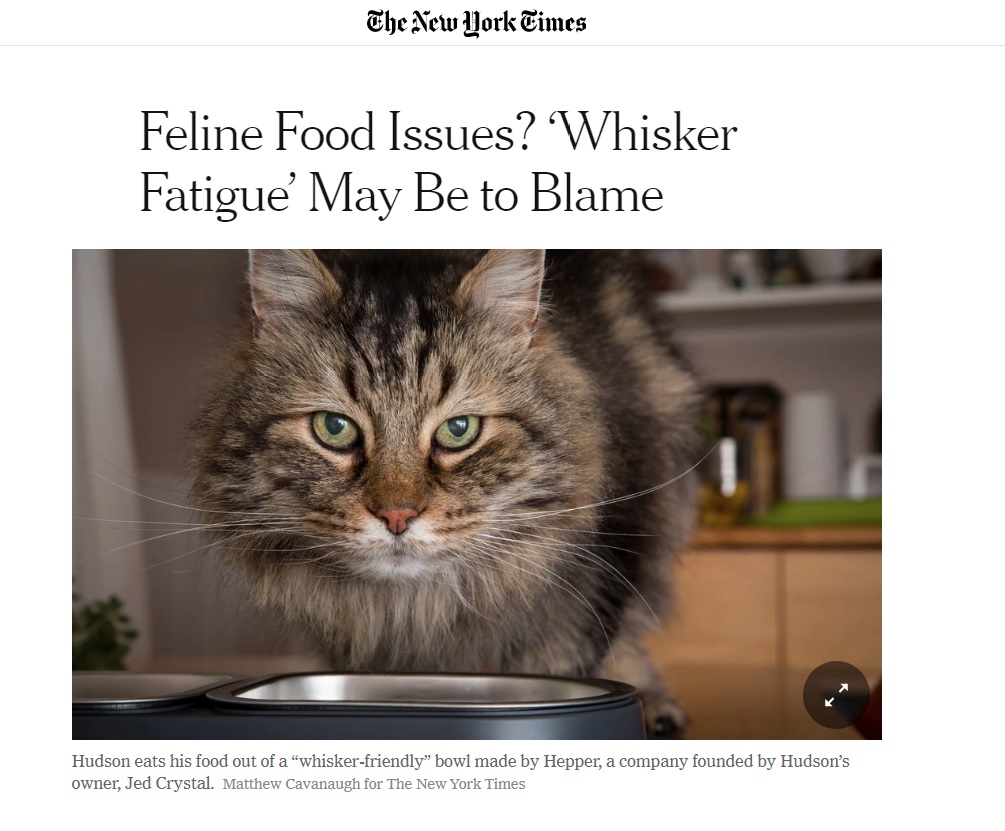
The solution to whisker stress? Cat’s gotta eat – and sure enough, there are over a dozen “whisker friendly” bowls or dishes that come up from a quick search on a well-known online retailer’s website. The NY Times article featured interviews with several manufacturers of these whisker friendly products, leading Boston Magazine to question whether or not NY Times was risking their journalistic integrity in reporting on this little-known feline epidemic.
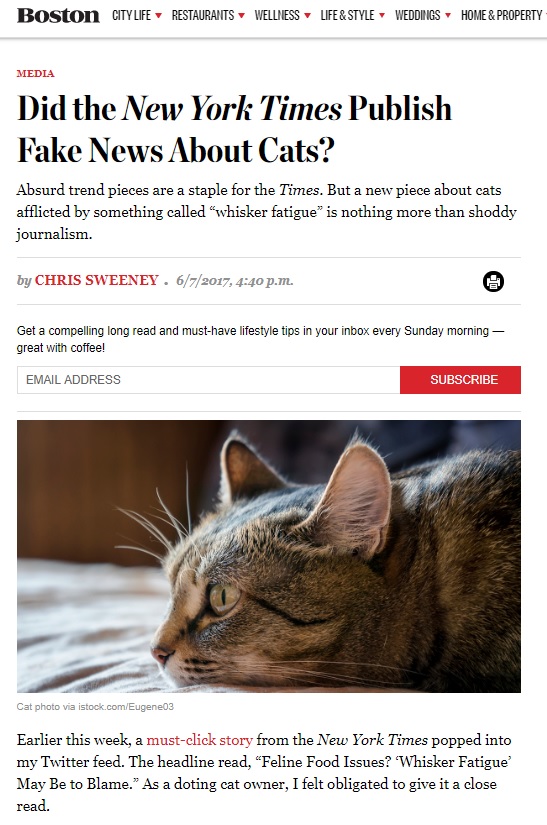
The question that emerges from this controversy is whether or not whisker stress is real, or just a made up marketing ploy to sell everyone new food dishes for their cats. Finally, science comes to the rescue! Recently a new manuscript, “Evaluation of whisker stress in cats” was published in the Journal of Feline Medicine and Surgery, to answer that very question. The study, based out of the School of Veterinary Medicine at Washington State University, tested 38 housecats in order to find out if there is evidence that whisker stress is real.
To do this, researchers first got some data about each participating kitty. They measured each cat’s whiskers (both on their eyebrows and muzzles) and measured the diameter and depth of each cat’s usual food dish. At home, owners got their cats hungry by withholding food for 12 hours. They then offered their cat a set amount of dry food in their regular food dish, and filmed their cat’s eating behavior for five minutes. For the next week, they fed their cat from a whisker-friendly (WF) dish, then they again withheld food for 12 hours, and filming their cat eating from the WF dish for five minutes. The researchers also matched the WF dish to the material of the cat’s usual food dish (ceramic or stainless steel).
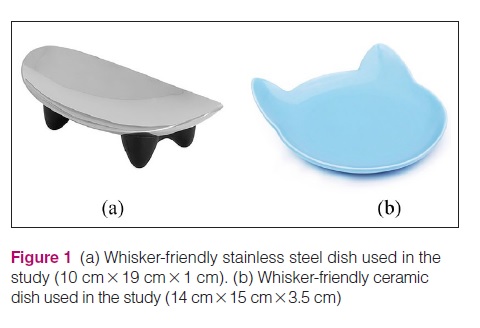
The final step happened the next day; the owner offered the cat food from their usual dish AND the WF dish side by side to see if their cat had a preference. The variables that were measured to assess whether cats experienced whisker stress included the amount of food eaten from each dish, whether the cat dropped food while eating from either dish, how much time they spent during the five minute period eating, and on the final step, which food dish the cat chose to eat from first.
So is whisker stress a thing? Well, researchers found no differences between cats’ eating behavior at their normal food bowl or when eating from the WF dish. They ate on average about the same amount of food, they dropped around the same amount of food (and if anything, they dropped more food when eating from the WF dish than their usual dish – 14 kibbles on average versus 1; this may be because the shallow dish means that the dry food got pushed ‘over the edge’). They also spent the same amount of time during the five-minute period eating at both their usual dish and the whisker-friendly one.
The only inkling that cats might dig the whisker-friendly option was from the result of the preference trial, where 63% of kitties first approached the WF dish. Now the preference trial itself was a “one shot” deal, and it is possible that the cats just chose whichever dish was placed closer to them. Ideally, the cats would have been given multiple trials to assess if the preference would be consistent across several trials. They would have also randomized the location of the dishes (left or right side) as many cats show a “side bias” when tested by stimuli that are offered side-by-side. It is also possible that the cats preferred the WF bowl for reasons other than the fact that their whiskers didn’t touch the side of the bowl; for example, a higher-sided whisker UNFRIENDLY dish may block a cat’s ability to see anyone approaching while they eat.
To sum up, this study did not provide STRONG evidence for whisker stress, as there could be alternative explanations for the only finding that supported a preference in some cats for the WF bowls. Do you need to throw away your whisker-friendly bowl? Or perhaps you’re wondering if you should be a late adopter and go whisker-friendly?
When it comes to our cats, I’m a big fan of choice. If you want to see if your cat would like a WF bowl, you could try one out and see what your cat prefers. If you’re cheap like me, you could feed your cat their food on a saucer (very cheap from thrift stores) and see if they like that before investing in a bowl that will set you back 15-25 bucks. And yes, it is reasonable to think that cats’ whiskers are sensitive – we know they are. But they are sensitive in the place your hair is – at the base. If you cut your hair, you don’t feel it in the same way as you do when your hair is being pulled! And would cats have survived this long as companion animals if they couldn’t eat or drink from a bowl without suffering?
Reference
Slovak, J. E., & Foster, T. E. (2020). Evaluation of whisker stress in cats. Journal of Feline Medicine and Surgery, 1098612X20930190.

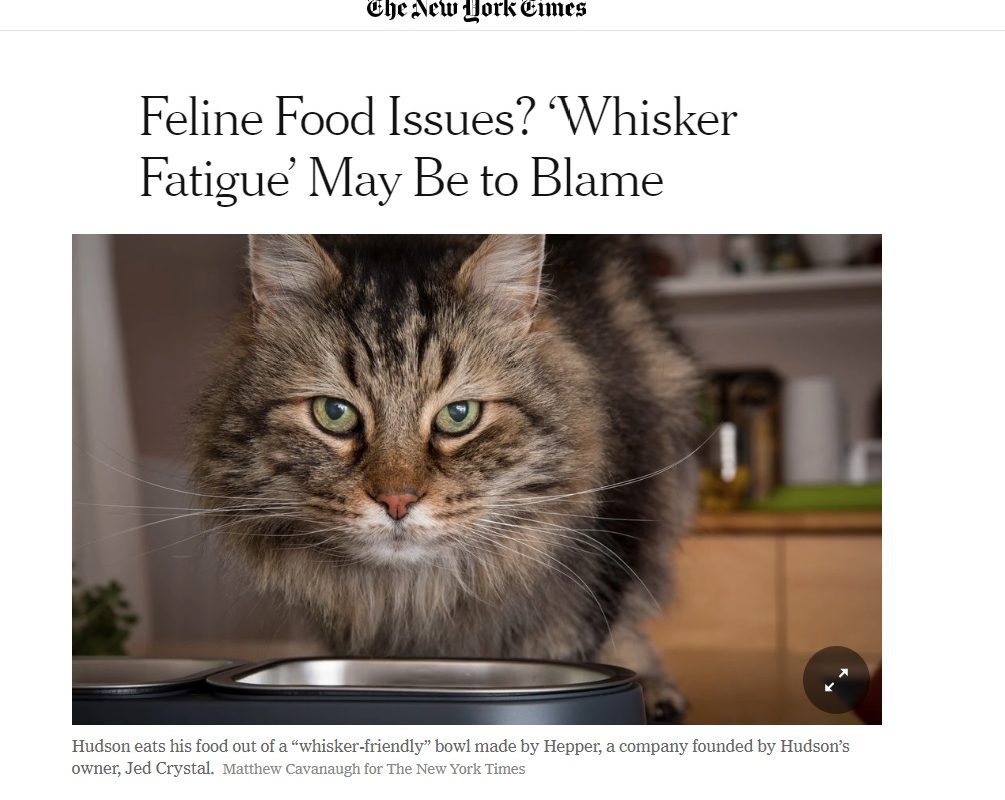
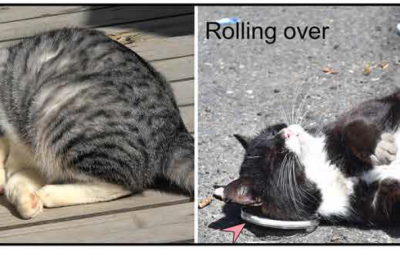
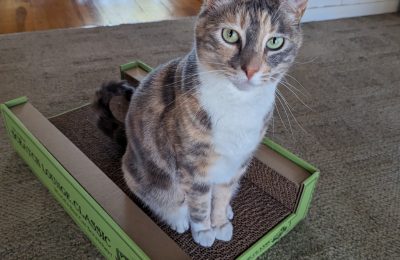
My cat is picky with her wet food, not her dry food. I don’t think you’d see a difference with her kibble. We tried switching to shallower steel dishes, and she does eat her wet food better from them. But they were about £2.50 each, so those prices sound like nonsense.